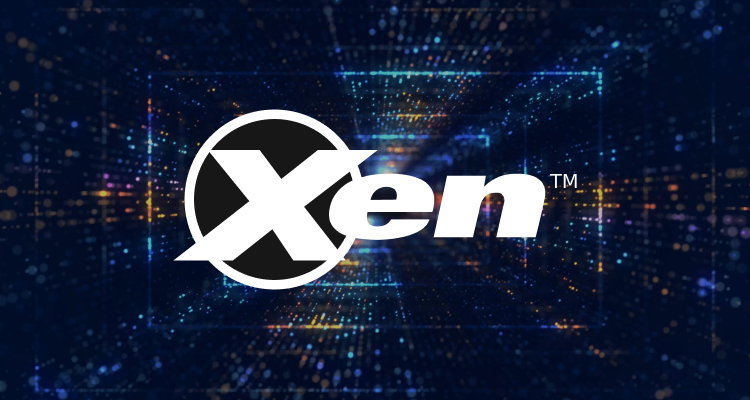What is a Xen Hypervisor?

The Xen hypervisor, also known simply as Xen, is an open-source virtualization platform that allows multiple operating systems to run on a single physical machine simultaneously. It is a type-1 hypervisor, which means it runs directly on server hardware, managing virtualized environments and providing a layer of abstraction between the physical hardware and the virtual machines (VMs).
Xen has been widely used in various environments, including data centers, cloud computing, and server virtualization. It has influenced the development of other virtualization solutions and continues to be an important part of the virtualization landscape.
Read More: What is a Hypervisor?
Deeper Dive Into The Xen Hypervisor?
Xen is a hypervisor that enables the simultaneous creation, execution, and management of multiple virtual machines on one physical computer. Without a host operating system, Xen can be deployed directly on computer hardware as a bare-metal type-1 hypervisor. As a type-1 hypervisor, Xen has complete command over all hardware, peripherals, and input/output (I/O) resources. In order to access hardware components, guest virtual machines must install the Xen virtual device drivers and request Xen to supply any resource. Thanks to Xen’s native support for most operating systems, including Windows and Linux, it is possible to run numerous instances of the same or distinct operating systems.
Along with supporting x86, IA-32, and ARM architectures, Xen is very versatile. Citrix Systems acquired XenSource in 2007, the company that created the Xen project. The Xen project went live for the first time in 2003. This hypervisor is open-source. You may also get it in an enterprise edition.

Components of a XenServer?
XenServer consists of several key components that work together to provide virtualization services. Here are the main components of XenServer:
Xen Hypervisor:
The core component of XenServer is the Xen hypervisor, which is responsible for running and managing virtual machines on the host hardware. The hypervisor sits directly on the hardware and acts as a thin layer between the physical and virtual machines.
Dom0 (Domain 0):
Running on top of the Xen hypervisor is Domain 0, a privileged virtual computer. This specialized virtual machine oversees all of the other VMs and has direct access to the underlying hardware. The XenServer administration interface is provided by Dom0, which runs a modified Linux kernel.
XAPI (XenAPI):
The XenServer management layer is known as XenAPI. This layer is accountable for managing administrative chores and offering a programmatic interface for administering virtual machines. Some tools, including the graphical user interface (GUI) for XenCenter and the command-line interface (CLI) for XenServer, are among the tools administrators may use to communicate with XenServer via XAPI.
XenCenter:
XenCenter is a Windows-based graphical virtualization management tool for XenServer. It provides a user-friendly interface for administrators to create, configure, and monitor virtual machines, as well as manage the overall virtualization environment. XenCenter communicates with XenServer through XenAPI.
Storage Repositories:
A variety of storage repositories are compatible with XenServer. These include local storage, the Network File System (NFS), and the Internet Small Computer System Interface (iSCSI). Backup copies, snapshots, and other data related to virtual machines can be kept in the storage repositories.
Networking Stack:
XenServer has a networking stack that lets you set up virtual networks to enable communication between virtual machines and the external network. Features like network bonding and Virtual Local Area Networks (VLANs) are among those it supports.
Resource Pools:
Administrators can organize physical hosts into groups called resource pools which use XenServer to share their resources. Resource pools make load balancing and better resource usage possible in a virtualized server environment.
Live Migration:
XenServer supports live migration, allowing virtual machines to be moved from one physical host to another without downtime. Live migration enhances flexibility, scalability, and system maintenance.
Products for Monitoring a XenServer
eG Enterprise: eG Enterprise is a comprehensive monitoring solution that supports XenServer. It provides end-to-end visibility into the virtualized environment, including virtual machines, hosts, storage, and networking.
ServiceNow Integration: ServiceNow is a popular IT Service Management (ITSM) platform. Integration with XenServer monitoring solutions can enable automatic ticket generation for identified issues, allowing for streamlined incident response and resolution workflows.
ComTrade Microsoft SCOM integration for XenServer: SCOM is a part of the Microsoft System Center suite and provides infrastructure monitoring. Integration with XenServer monitoring solutions extends the monitoring capabilities to include virtualized environments.
HypOps: HypOps is a mobile application that provides management of virtualization platforms. Currently, this app is supported on iPad and iPhone and provides management and basic control of cloud and hypervisor infrastructure. It supports Citrix XenServer and the Amazon EC2 Cloud and CloudStack platforms.
Verax Systems: The XenServer plugin for the popular Verax NMS & APM products provides service-oriented, unified management & monitoring of networks, applications, and infrastructure, enabling quick problem detection, root-cause analysis, reporting, and recovery automations.
AWS CloudWatch Integration: For organizations using XenServer in conjunction with Amazon Web Services (AWS), integrating XenServer monitoring with AWS CloudWatch provides a unified view of on-premises and cloud-based resources.

How does eG Enterprise complement XenCenter for monitoring XenServers?
eG, Enterprise is an IT performance monitoring and management solution that provides end-to-end visibility into the performance and health of IT infrastructures, including virtualized environments like XenServer. While XenCenter is primarily a management tool for configuring and managing XenServer environments, eG Enterprise complements XenCenter by offering advanced monitoring, analytics, and reporting capabilities. Here’s how eG Enterprise can complement the monitoring of XenServer:
1. Comprehensive Monitoring: eG Enterprise provides detailed monitoring of various components within the XenServer environment, including virtual machines, hosts, storage, and networking. It captures performance metrics, resource utilization, and other key indicators to offer a holistic view of the virtualized infrastructure.
2. Cross-Platform Monitoring: eG Enterprise supports cross-platform monitoring, allowing organizations to monitor not only XenServer but also other hypervisors, physical servers, client operating systems, applications, and network devices from a single console. This cross-platform support is beneficial for organizations with heterogeneous IT environments.
3. Root Cause Analysis: When performance issues occur in the virtualization platform, eG Enterprise helps identify the root cause of problems. It employs advanced analytics and correlation techniques to pinpoint the source of performance bottlenecks or disruptions, whether from the virtualization layer, applications, or infrastructure components.
4. Proactive Monitoring: eG Enterprise offers proactive monitoring capabilities, enabling administrators to identify potential issues before they impact end-users or critical business services. Early detection allows for preventive measures and helps maintain a high level of service availability.
5. End-User Experience Monitoring: Besides monitoring the virtualization layer, eG Enterprise includes end-user experience monitoring. It measures the performance of applications and services from the user’s perspective, helping organizations ensure a positive user experience.
6. Dashboards and Reports: eG Enterprise provides customizable dashboards and reports that offer insights into the performance, security, and health of XenServer environments. These visualizations help administrators quickly assess the status of virtualized infrastructure and make informed decisions.
7. Integration with XenCenter: While XenCenter is the primary management interface for XenServer, eG Enterprise can integrate with XenCenter to provide a consolidated view of both management and monitoring activities. This integration streamlines the workflow for administrators, allowing them to use a single interface for managing and monitoring XenServer environments.
8. Capacity Planning: eG Enterprise assists capacity planning by analyzing historical performance data and trends. This helps organizations optimize resource allocation, plan for future growth, and avoid resource shortages.
Conclusion
Book a consultation with us today to learn more about what hypervisor technology can do for your company! We offer a complete endpoint server that fits every need and can help you build the digital workspaces perfect for your business and employees.
If you have remote, temporary, or freelance employees, we can recommend a dedicated server to host their virtual environment. Our cloud server hosting services have many fascinating perks that you should not overlook. Once you’ve outlined your preferences, we will be there for you at every turn to ensure the change goes off without a hitch. Book your FREE consultation today.

